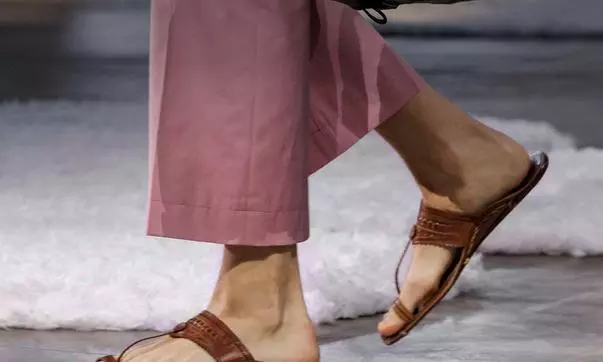DC Edit | Prada’s Sandals a Caveat to Indian Fashion Industry
Luxury brand accused of cultural appropriation over $1,200 sandal inspired by Indian heritage

Luxury fashion label Prada recently launched a footwear design, which is startlingly reminiscent of the humble Kolhapuri chappal, an artisanal leather sandal indigenous to the town of Kolhapur in Maharashtra.
While the adaptation of designs is considered normal, though not legal, this Incident has triggered a furore and set off a debate on cultural appropriation versus appreciation.
The Kolhapuri chappal is not just footwear. It’s a slice of living heritage, which was painstakingly crafted by skilled artisans using age-old methods. It embodies India’s rich legacy of indigenous design.
It is inappropriate on part of a global brand like Prada to steal the design and sell it at a price which is 120 times more than the original product without any visible acknowledgment to its roots.
Though the Kolhapuri chappal was granted GI status in 2019, it could not stop international brands from capitalising on its form while ignoring its name, origin and socio-economic ecosystem.
This incident raises important questions: If Prada could sell a pair of sandals, which is available at less than $10 (Rs 840) in India, for $1,200 (over Rs 1 lakh), why do its makers still languish in poverty? Why can’t the government, which gives various incentives to foreign companies to create jobs in India, take India’s legacy products to the international markets in partnership with global fashion majors?
Globally, people aspire for new designs and fashion at an affordable cost. India with its multiple cultures, have a treasure trove of handicrafts and fabrics which are not exploited commercially for the benefit of artisans, who continue to lead miserable lives in poverty. While imitation is the best flattery, Prada has in fact given a wake-up call for Indians to realise the worth of their heritage.

